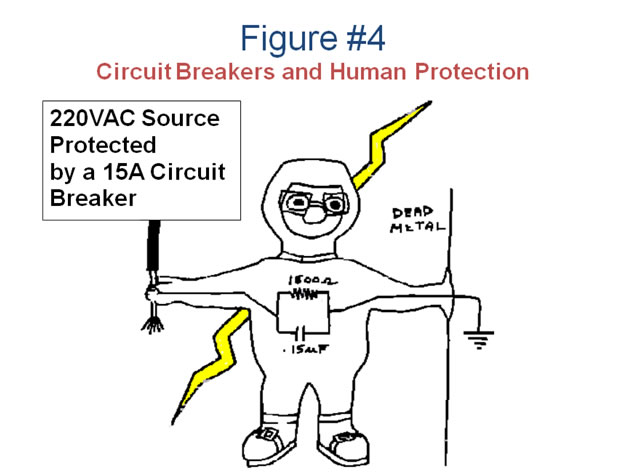Basic Electrical Safety
Circuit Breakers and Electric Shock
This model can be used to help illustrate the risks of electric shock and circuit breakers. Figure #4 shows the circuit diagram of an unfortunate individual whose body has provided a ground path for a 220VAC source. In this case the current that this individual is drawing will not even be enough to cause the circuit breaker to trip, as a result the current will be continuous. This will be a case of electrocution where not only will the heart normal cycle stop, but internal organs will be heated in a destructive manner.

There is another reason why a circuit breaker tripping will not protect the human body from an electric shock. Even if the current was enough to trip the circuit breaker, circuit breakers normally take a minimum of 1-1/2 cycles to open. That means that the full voltage will contact the body and the resulting full current will still pass through the body, causing a potentially lethal electric shock. Although circuit breakers are important safety devices, they do not provide protection from electric shock.
Salus Engineering International can reduce the risks present in your facilities by conducting SEMI S2 evaluations, product safety training, or specialized evaluations catered to your specific needs. Contact us to discuss your safety engineering needs.